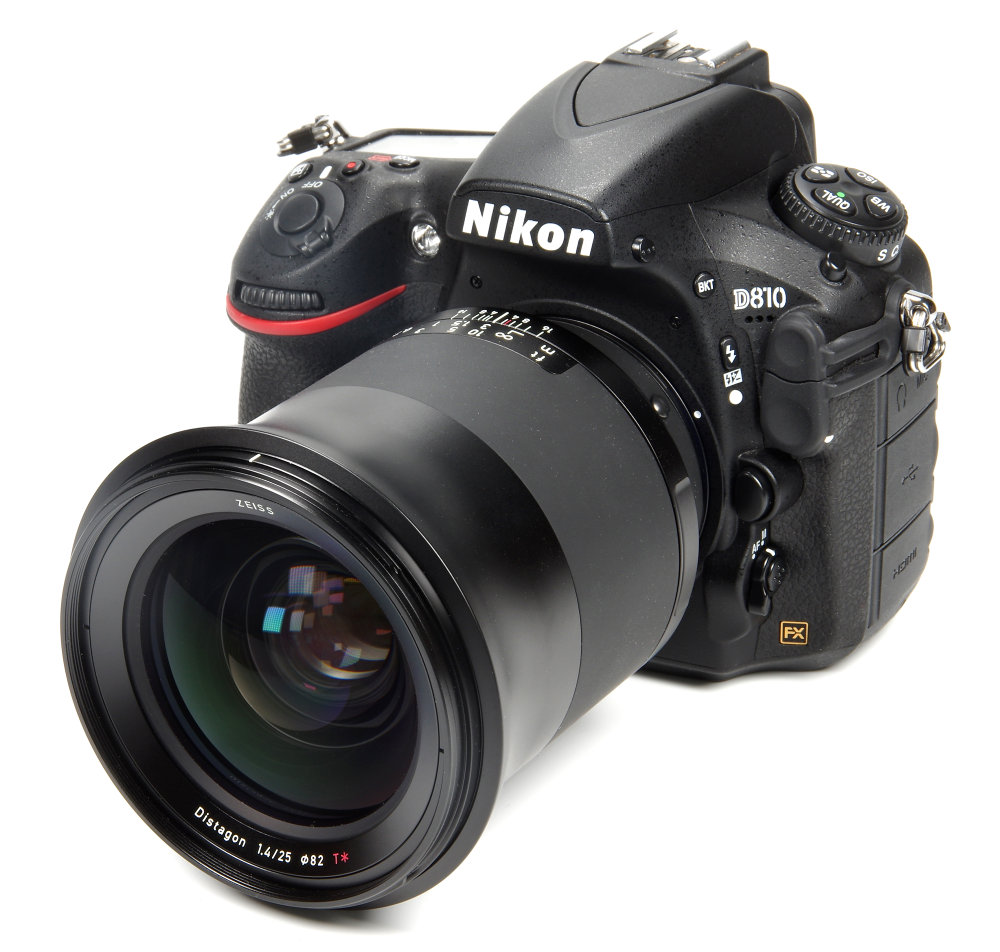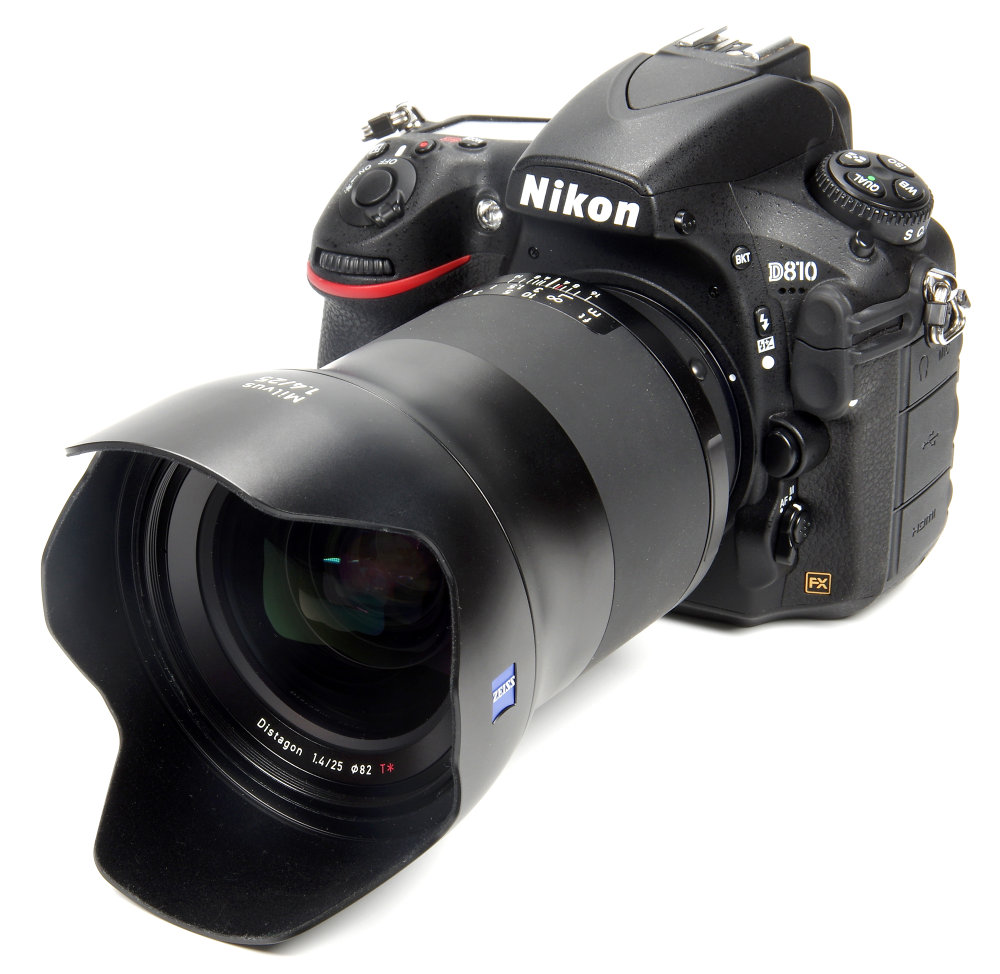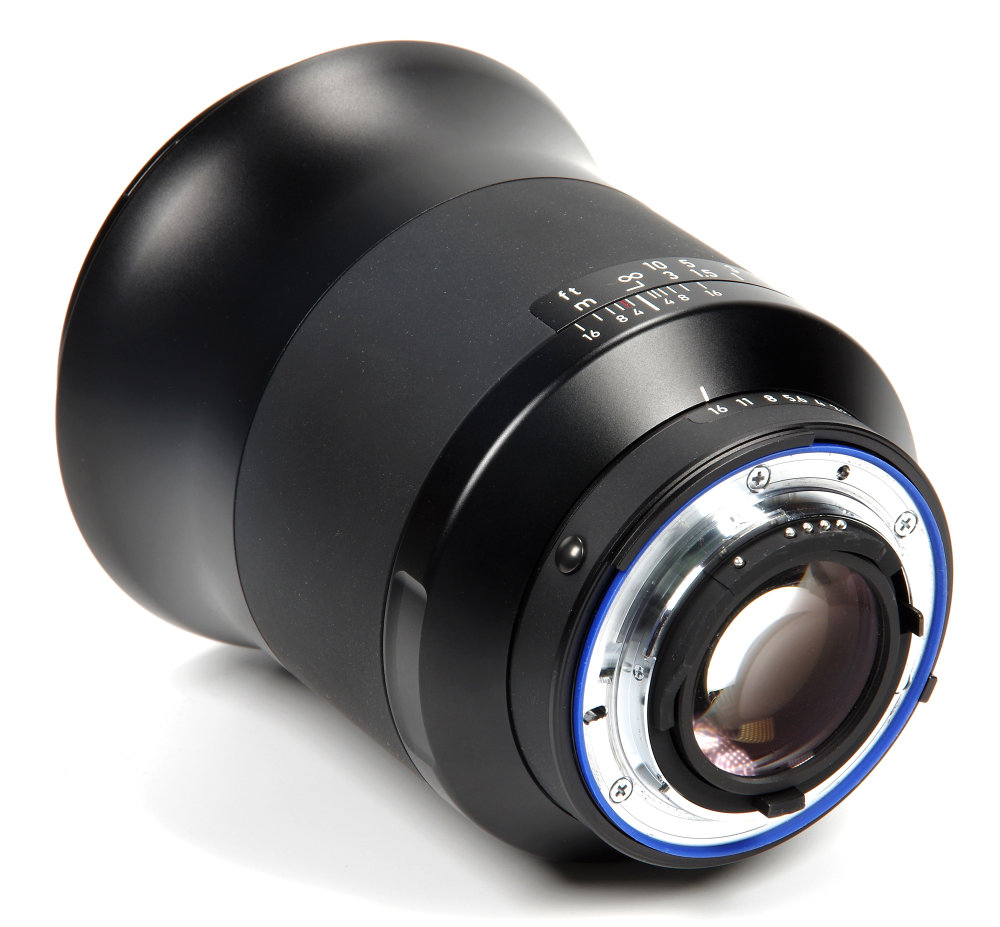Zeiss Milvus 25mm f/1.4 Review
Zeiss Milvus 25mm f/1.4 Handling and Features
The lens is packaged beautifully in the usual Zeiss minimalistic way, something that extends to the instruction manual, with its basic, quite sparse content. The first impression is of a heavy and bulky lens, this Nikon ZF.2 mount version weighing in at a substantial 1090g, measured without front or rear caps. Nonetheless, balance is good on the Nikon D810 and this makes handling in general to be a pleasant, efficient experience. There is no escaping the weight.
The lens is T* coated, suppressing internal reflections and flare. The whole lens is dust and moisture protected. Filter size is 82mm. Though filters can be fitted, such is the potential quality of the glass that I would generally only use the lens hood, which is generously sized and should offer excellent shielding of the front element. Peering into that front element, the effective T* coating enables a clear view of the 9 bladed rounded diaphragm, designed to improve the bokeh, the smooth gradation of the out of focus areas in an image.
The metal lens hood bayonets cleanly into place, another example of slick and smooth manufacture. Behind the hood, the entire lens barrel rotates to effect manual focus, although the front element itself does not rotate. This makes the use of polarising filters much easier. The half of the lens body closest to the camera is rubberised, giving an excellent grip. This rubberised grip does not have a tendency to pick up dust spots, unlike some finishes on some earlier Zeiss lenses. Focusing is down to 0.25m, or just under 10 inches.
The focusing scale is very clearly marked in feet and metres, and for the Nikon version turns in the correct Nikon direction. The Canon (ZE) version of the lens focuses in the reverse direction. This means that users of the respective marques will find that the Zeiss lenses fit into the scheme of operation just the same way that the original marque lenses do. With a manual focus lens this becomes very important as it avoids confusion when swapping lenses. There is also a clear depth of field scale provided.
The ZE (Canon) lens has no other features and the aperture is controlled solely by the camera. The ZF.2 (Nikon) lens has an aperture scale and for the camera to control aperture needs to be set at the minimum aperture of f/16. There is a click stop and a release catch for this auto position. The Nikon version also has a small catch on the lens mount. This enables the aperture ring to be de-clicked, thus allowing step-less and silent aperture changes, particularly useful for video shooting.
Optical construction is 15 elements in 13 groups. There are aspheric elements and anomalous partial dispersion glass is used. Rounded diaphragm blades complete the optical picture, resulting in Zeiss claiming that the lens has “creamy bokeh” - this does ensure that out of focus elements in an image are not reproduced harshly, but instead have a smooth transition.
There are many situations where manual focus is the most viable method, particularly in macro photography, but potentially anywhere if a considered approach is being taken. 25mm is quite wide, at one time it would have been considered ultra-wide, and that does make finding the point of focus a bit more difficult with current AF focusing screens. An obvious solution is to use a tripod and Live View, especially when the image can be magnified. The LV approach works very well in brighter light, but in very low light the noise on the monitor eventually becomes so obtrusive that the method breaks down. The human eye becomes superior again, despite the trickiness of seeing the specific focus point.
Add your message
Please login here or if you've not registered, you can register here. Registering is safe, quick and free.
photodo Stats
428 MTF tests
74 in-depth photodo reviews
100+ users join each day
Help the lens community by reviewing or rating a lens today via our lens search
Latest Lens Reviews
- Chinon 28mm f/2.8 Vintage Lens Review
- Canon EF 70-200mm f/4L IS II USM Lens Review
- Samyang AF 85mm f/1.4 EF Review
- Sigma 70mm f/2.8 DG Macro Art Review
- Samyang AF 24mm f/2.8 FE Review
- Meike 50mm f/1.7 Review
- Tamron 70-210mm f/4 Di VC USD Review
- Lensbaby Burnside 35mm f/2.8 Review
- Asahi Super Takumar 50mm f/1.4 Review
- Asahi Super-Multi-Coated Takumar 135mm f/3.5 Review



